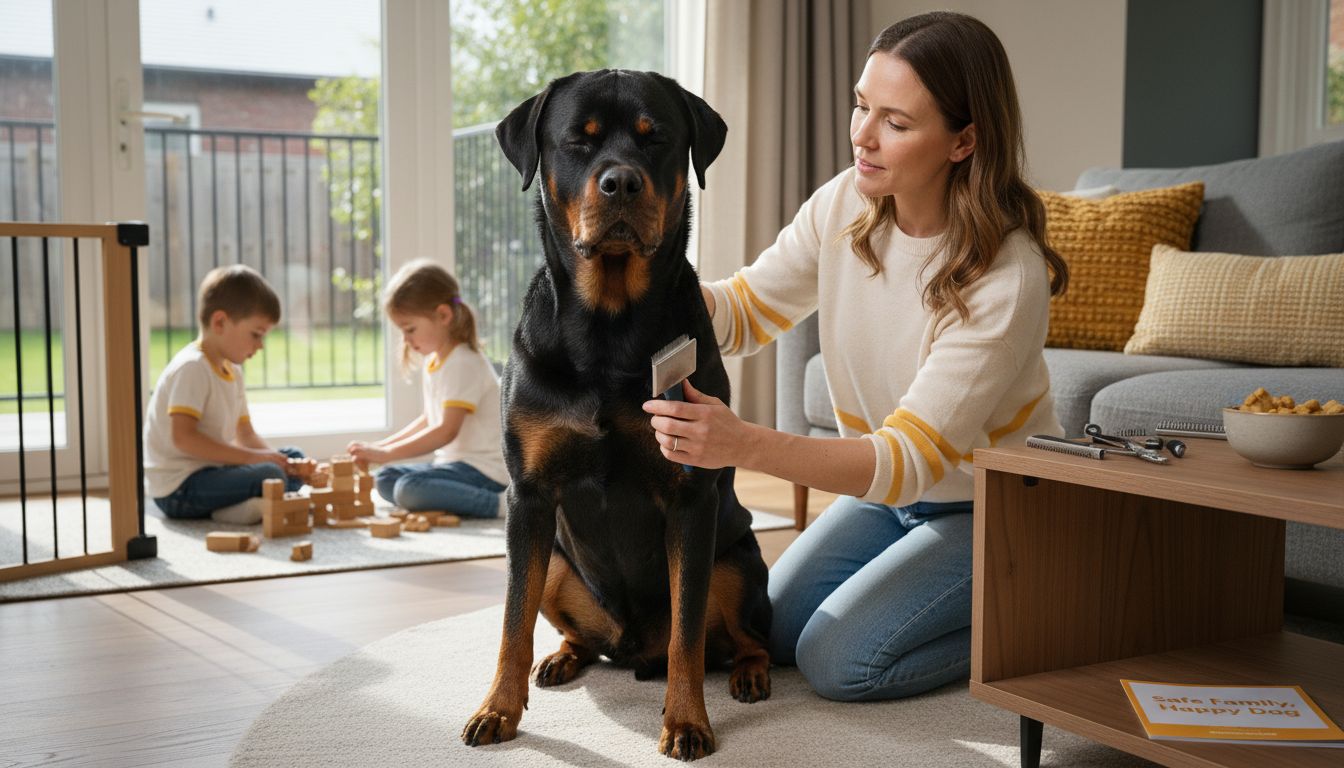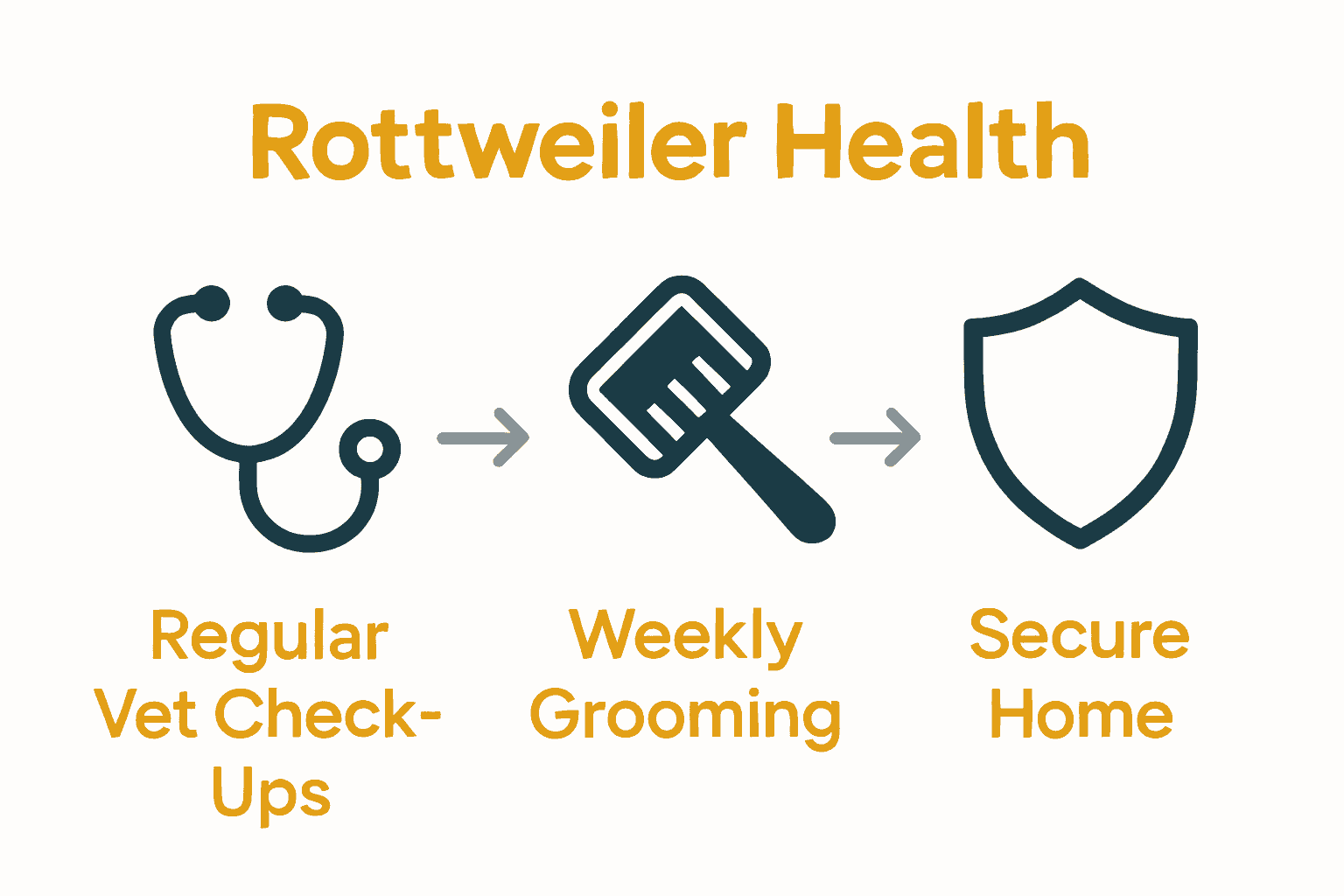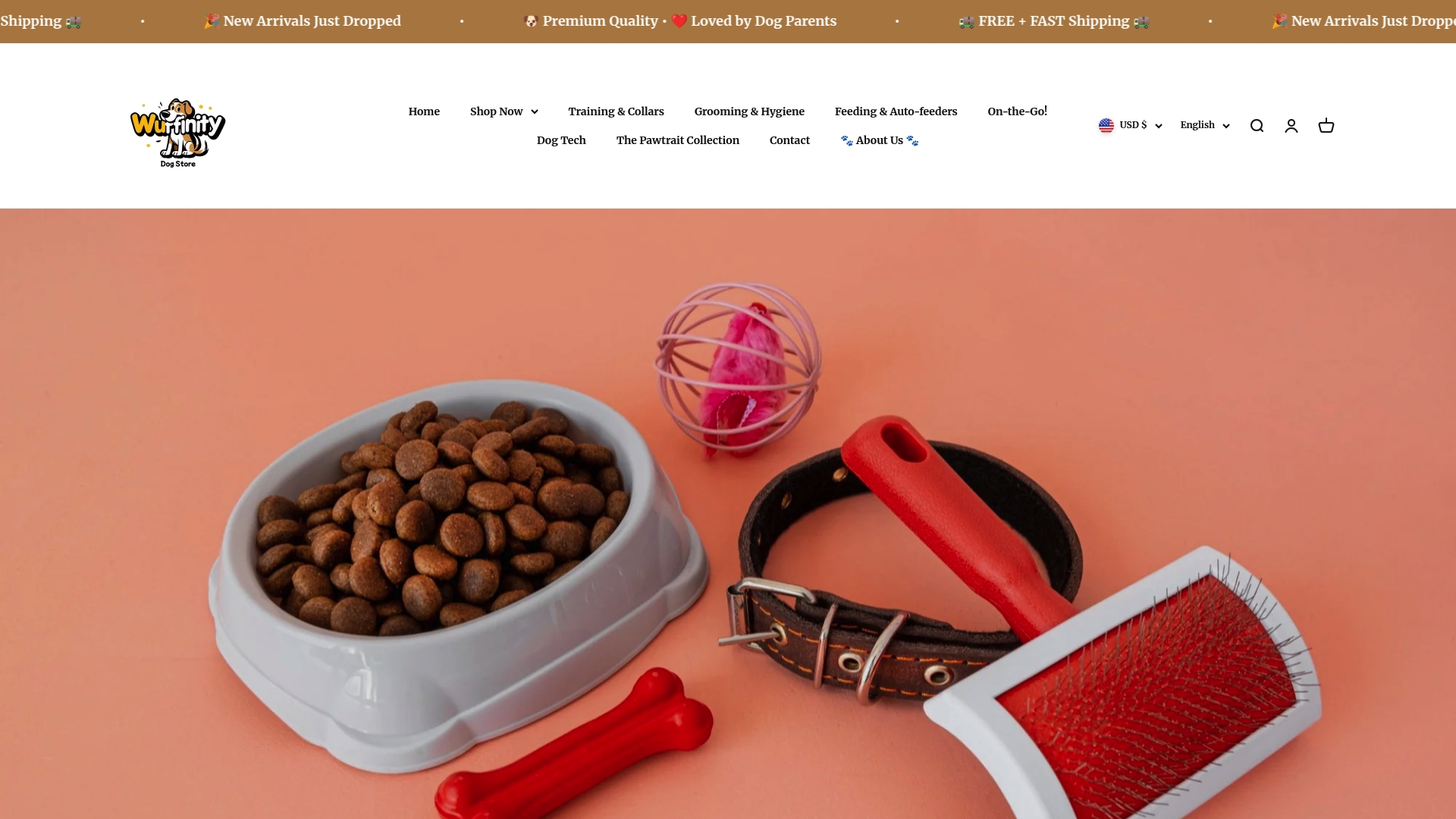Over two thousand years of history shape the unique character of the Rottweiler. These powerful dogs first traveled alongside Roman legions as essential workers and protectors. Their journey from ancient cattle herders to trusted family guardians makes them stand out among modern breeds. Understanding the Rottweiler’s origins reveals why their loyalty, strength, and intelligence continue to captivate dog lovers who want a companion with both a remarkable story and a dependable temperament.
Table of Contents
- Rottweiler Breed Origins And History
- Physical Traits And Temperament Essentials
- Training Tips And Socialization Strategies
- Health Care And Grooming Requirements
- Safety, Legal Issues, And Home Preparation
Key Takeaways
| Point | Details |
|---|---|
| Rottweiler History | Rottweilers originated from Mastiff-type dogs used by Roman soldiers, evolving into versatile working dogs in the town of Rottweil. |
| Physical Traits and Temperament | Rottweilers are muscular, confident, and intelligent, known for their loyalty and protective nature when properly trained and socialized. |
| Training and Socialization | Effective training for Rottweilers combines positive reinforcement with early socialization, essential for developing balanced behaviors. |
| Health Care and Safety | Regular veterinary check-ups and appropriate home preparation are vital for maintaining Rottweiler health and ensuring safe interactions with others. |
Rottweiler Breed Origins and History
The story of the Rottweiler is a fascinating journey spanning over two millennia, tracing its roots deep into the heart of the Roman Empire. Mastiff-type dogs were more than mere companions during this era they were critical working animals that accompanied Roman legions across vast territories akc.org.
These powerful canines played multifaceted roles in Roman military campaigns. They were not just soldiers’ companions, but served essential functions in herding cattle and protecting soldiers during expansive military movements. As Roman troops traversed through what is now modern Germany, these dogs interbred with local canines, particularly in the town of Rottweil, gradually developing the distinctive characteristics we recognize in today’s Rottweiler breed amrottclub.org.
Eventually, these dogs evolved into what locals called the ‘Rottweiler Metzgerhund’ or “Butcher’s Dog of Rottweil” - a name that reflects their significant economic contribution. These dogs weren’t just protection animals; they were working partners who pulled heavy carts laden with meat to market, demonstrating remarkable strength and utility. Their robust physique, intelligence, and unwavering loyalty made them indispensable to butchers and traders in the region.
The breed’s transformation from Roman military companion to local working dog highlights the incredible adaptability of these remarkable animals. From herding livestock to protecting goods, Rottweilers developed a reputation for being versatile, powerful, and deeply committed to their human partners - characteristics that continue to define the breed today.
Physical Traits and Temperament Essentials
Rottweilers are a striking breed that commands attention with their powerful physique and confident demeanor. According to akc.org, these medium-to-large dogs boast a distinctive appearance characterized by a robust black coat with rich rust-colored markings that highlight their muscular build.
The breed’s physical characteristics are a testament to their working dog heritage. Muscular and well-proportioned, Rottweilers are built for strength and endurance. amrottclub.org emphasizes their calm and confident temperament, which goes hand in hand with their impressive physical presence. Their powerful frame is complemented by a surprisingly gentle and intelligent nature, making them much more than just an intimidating guard dog.
Temperament-wise, Rottweilers are renowned for their deep loyalty and protective instincts. They form incredibly strong bonds with their family, displaying a remarkable blend of gentleness with loved ones and unwavering courage when sensing potential threats. This isn’t aggression, but a carefully calibrated protective instinct that makes them exceptional companion animals. Their intelligence means they’re highly trainable, responding best to consistent, positive reinforcement that respects their inherent dignity and strength.
It’s crucial to understand that a Rottweiler’s temperament is heavily influenced by socialization and training. While they have a natural protective streak, they’re not inherently aggressive. With proper training, early socialization, and consistent guidance, Rottweilers become incredibly loving, balanced companions who are as comfortable playing with children as they are standing guard over their family. Their combination of physical prowess and emotional intelligence makes them one of the most remarkable breeds for dedicated dog owners who understand and respect their unique characteristics.

Training Tips and Socialization Strategies
Rottweiler training requires a unique approach that balances firm guidance with positive reinforcement. These intelligent dogs thrive on consistent, structured training that challenges their mental capabilities while respecting their natural strengths. Early socialization is not just recommended it’s absolutely crucial for developing a well-adjusted Rottweiler.
Successful training begins with understanding the breed’s inherent characteristics. Rottweilers are naturally protective and highly intelligent, which means they respond best to training methods that engage their mind and establish clear leadership. Key strategies include:
- Positive reinforcement techniques
- Early and consistent socialization with people and other animals
- Structured obedience training
- Patient and firm leadership
- Reward-based learning approaches
The critical window for socialization occurs between 8 and 16 weeks, where puppies are most receptive to new experiences. During this period, expose your Rottweiler to diverse environments, sounds, people, and other animals. This exposure helps prevent potential fear-based aggression and develops a confident, well-rounded dog. Short, engaging training sessions work best, as Rottweilers can become bored or stubborn with repetitive or lengthy drills.
Advanced training should focus on channeling their natural protective instincts positively. Professional obedience classes can be incredibly beneficial, providing structured environments where they learn discipline while understanding appropriate behavior. Remember, a well-trained Rottweiler is not just an obedient pet, but a confident companion who understands boundaries and feels secure in their role within the family unit. Consistency, patience, and understanding are the cornerstones of successfully raising a balanced, loving Rottweiler.
Health Care and Grooming Requirements
Rottweiler health care demands a proactive and comprehensive approach that addresses both physical maintenance and preventive medical strategies. According to akc.org, these robust dogs require regular veterinary check-ups to monitor potential breed-specific health concerns, with particular attention to conditions like hip dysplasia and heart problems.
Grooming a Rottweiler is relatively straightforward, thanks to their short, dense coat. Weekly brushing is essential to remove loose hair and maintain optimal skin health. These dogs are moderate shedders, so consistent grooming helps manage hair accumulation and provides an opportunity to check for any skin irregularities. Check out our 7 Best Dog Grooming Accessories guide to ensure you have the right tools for effective maintenance.
Beyond coat care, Rottweilers need comprehensive health monitoring. Regular veterinary screenings should include:
- Hip and elbow dysplasia evaluations
- Cardiac health assessments
- Eye examinations
- Weight and nutrition consultations
- Preventative vaccination schedules
Nutritional management plays a crucial role in maintaining your Rottweiler’s health. A balanced diet tailored to their age, weight, and activity level helps prevent obesity and supports joint health. Professional veterinarians recommend high-quality protein sources, controlled portions, and supplements that support bone and muscle development. Remember, prevention is always more cost-effective and compassionate than treating advanced health issues.

Safety, Legal Issues, and Home Preparation
Rottweiler ownership comes with significant responsibilities that extend far beyond basic pet care. amrottclub.org emphasizes the critical importance of understanding legal obligations and home preparation when bringing this powerful breed into your life. These dogs require a structured environment that ensures both their safety and the safety of those around them.
Home preparation is paramount for a Rottweiler. Your living space needs to accommodate their substantial size and high energy levels. Essential safety considerations include:
- Secure, high-quality fencing at least 6 feet tall
- Designated dog-proof areas within your home
- Robust, chew-resistant furniture and belongings
- Clear boundaries and consistent training zones
- Secure storage for potentially dangerous household items
Legal considerations are equally crucial for Rottweiler owners. Many municipalities have specific regulations regarding large breed dogs, including mandatory insurance, leash laws, and potential breed-specific legislation. Some areas require special permits or have restrictions on owning breeds perceived as aggressive. It’s essential to research local ordinances thoroughly and understand your legal responsibilities as a Rottweiler owner.
Beyond physical preparation, socialization remains the most critical safety strategy. A well-socialized Rottweiler is a controlled Rottweiler. This means consistent exposure to different people, environments, and situations from an early age. Professional training, controlled interactions, and patient guidance help transform these powerful dogs into balanced, trustworthy companions. Remember, responsible ownership is about prevention, understanding, and creating a harmonious relationship between your Rottweiler and the world around them.
Equip Your Rottweiler for a Healthy and Happy Life
Caring for a Rottweiler means meeting their unique needs in training, grooming, and safety. This powerful breed thrives with consistent socialization and the right tools to support their strength and intelligence. If you’re looking to provide the best care for your Rottweiler, explore high-quality grooming supplies, training aids, and health products designed to make your daily routine easier and more effective.

Discover carefully curated essentials at Wuffinity.store that help you manage grooming, reinforce training, and maintain your dog’s health. Act now to create a safe and comfortable environment for your loyal companion. Start with our trusted selection and take confident steps toward a balanced, loving relationship with your Rottweiler today.
Frequently Asked Questions
What are the key physical traits of Rottweilers?
Rottweilers are medium-to-large dogs with a robust black coat and rich rust-colored markings. They possess a muscular build that reflects their working dog heritage, characterized by strength and endurance.
How can I properly train and socialize my Rottweiler?
Training Rottweilers requires a balance of firm guidance and positive reinforcement. Early socialization between 8 and 16 weeks is crucial, involving exposure to diverse environments, people, and other animals to develop a well-adjusted dog.
What are common health concerns for Rottweilers?
Rottweilers may be prone to certain health issues such as hip dysplasia, heart problems, and other breed-specific conditions. Regular veterinary check-ups are essential for monitoring their health and addressing any concerns promptly.
What should I include in my home preparation for a Rottweiler?
Home preparation for a Rottweiler includes ensuring secure fencing, creating dog-proof areas, and establishing clear training boundaries. It’s also vital to understand local regulations regarding breed ownership to ensure compliance and safety.






0 comments